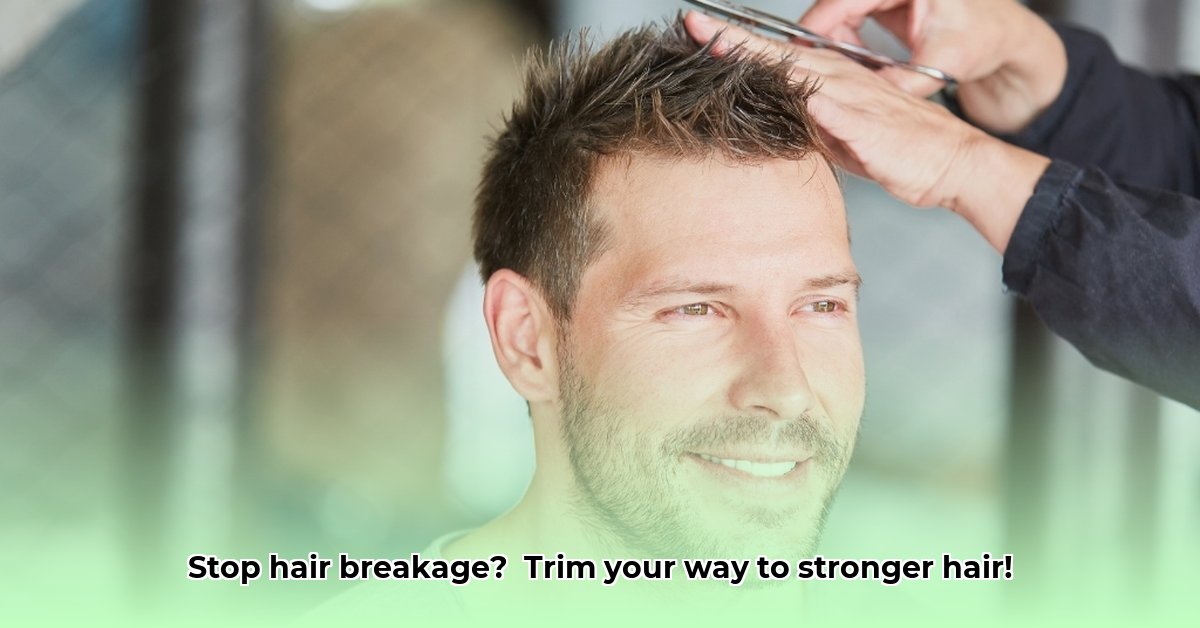
Benefits of Cutting Hair: The Secret to Stronger, Healthier Strands
Let's be honest: nobody loves the idea of a haircut, especially when growing hair long. But regular trims aren't about vanity; they're crucial for healthy, vibrant hair. Think of it as preventative maintenance – a small sacrifice for significant results!
Why Trimming Prevents Damage
Split ends – those annoying frayed ends – weaken hair, causing breakage. The damage travels up the hair shaft, leading to more breakage. Trimming removes these, preventing this domino effect. This also addresses damage from heat styling, harsh chemicals, and everyday wear and tear. A trim removes the damaged parts, allowing healthier growth.
How Often Should You Trim Your Hair?
Frequency depends on hair type and styling habits. Fine hair prone to damage needs trims every 6-8 weeks, while thicker hair may only need one every 3-4 months. Frequent heat styling necessitates more frequent trims. The appearance of split ends, breakage, or damage indicates a trim is necessary. Isn't it amazing how a simple trim can rejuvenate your hair?
DIY vs. Professional Haircut: Which is Right for You?
While at-home trims are possible, a professional stylist offers superior results. Stylists assess hair condition, identify problem areas, and create styles that complement your hair type. They efficiently address uneven layers and persistent split ends. However, for minimal trimming of damaged ends, an at-home trim is feasible.
Steps for a Safe At-Home Trim (Minimal Trimming Only):
- Prepare: Work with dry hair. Wet hair stretches, leading to accidental over-trimming. Dry hair allows for precise split-end identification.
- Section: Divide hair into smaller sections for even trimming.
- Use Sharp Shears: Dull scissors cause more damage. Invest in hair-cutting shears.
- Trim Ends Only: Remove only the split ends. It's better to trim a little and reassess than to cut too much.
- Check: Step back and examine carefully before making further adjustments.
Going Beyond the Trim: A Holistic Approach to Hair Health
Regular trims are essential, but a holistic approach maximizes hair health. This includes:
- Gentle Products: Choose shampoos and conditioners free of harsh sulfates and silicones, as these can dry out hair.
- Limit Heat Styling: Air drying is best. Use a heat protectant spray if using heat tools.
- Protect from Elements: Wear a hat in sun or wind to shield hair.
- Healthy Diet: A balanced diet promotes healthy hair growth.
- Gentle Handling: Avoid harsh brushing, especially when wet. Detangle gently from the ends.
The Bottom Line: Embrace the Trim!
Regular trims are an investment in long-term hair health, promoting stronger, healthier, and more vibrant hair. Consistent maintenance is key, whether you choose a professional or at-home trim. Your hair will thank you for it!
How to Trim Curly Hair to Minimize Breakage and Maximize Growth
Key Takeaways:
- Regular trims are crucial for healthy curly hair growth.
- Trimming prevents split ends from causing further breakage.
- Dry cutting is essential for accurate trimming.
- Trimming frequency depends on individual hair needs; 6-8 weeks initially, adjusting as needed.
- Sharp shears are a must; dull shears worsen damage.
- At-home trims are an option with practice, but professional trims offer superior results.
Understanding Your Curls
Knowing your curl type (e.g., 2A, 3C, 4B) helps determine trimming frequency. Tighter curls might require more frequent trims. 6-8 weeks is a good starting point, adjusting as needed.
The Importance of Regular Trims
Regular trims prevent split ends from traveling upward, thereby maintaining hair integrity and promoting longer, healthier growth.
Choosing the Right Tools
Sharp shears are crucial to avoid further damage. You'll also need sectioning clips, a wide-tooth comb, and (optionally) a magnifying mirror.
The Dry Cut Method: A Step-by-Step Guide
Dry cutting provides accuracy.
Step 1: Preparation: Start with clean, dry, detangled hair.
Step 2: Sectioning: Use clips to divide hair into manageable sections.
Step 3: The Trim: Hold each section taut, and carefully trim only the split ends. Less is more.
Step 4: Check and Repeat: Continuously check your work, ensuring even trimming of split ends.
At-Home vs. Professional Trims
At-home trims save money, but professionals provide superior, tailored cuts, assessing hair health and advising on optimal trimming techniques and frequency.
Maintaining Healthy Curls Between Trims
Deep conditioning treatments and protective styling maintain curl moisture and reduce breakage-causing stress.